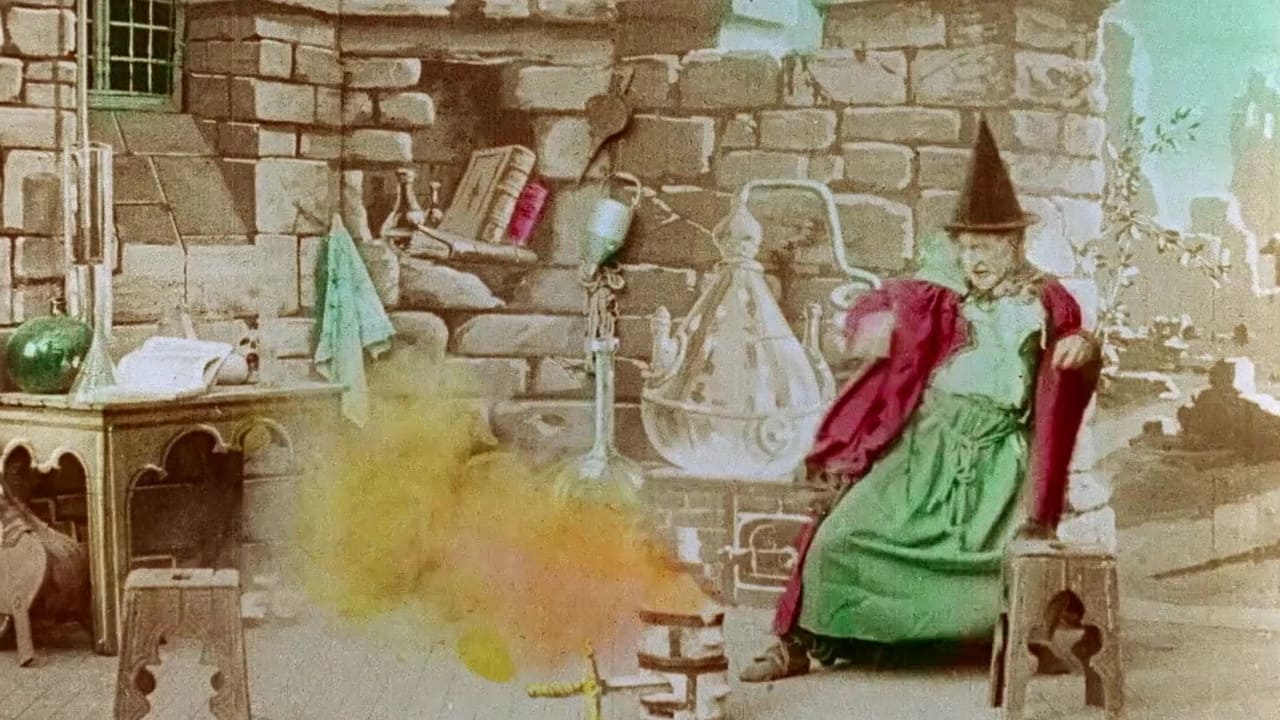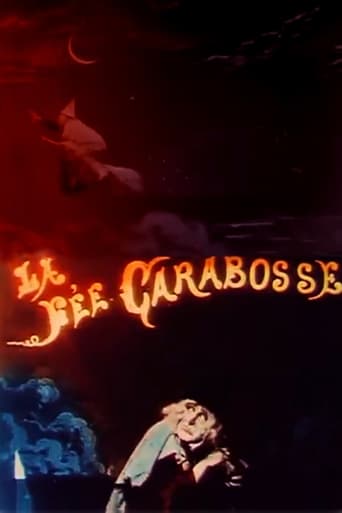NekoHomey
Purely Joyful Movie!
Smartorhypo
Highly Overrated But Still Good
Doomtomylo
a film so unique, intoxicating and bizarre that it not only demands another viewing, but is also forgivable as a satirical comedy where the jokes eventually take the back seat.
Anoushka Slater
While it doesn't offer any answers, it both thrills and makes you think.
Hitchcoc
This is another example of a story that has scenes that confuse the viewer. A man goes to a witch to find out where the love of his life is being held. He embarks on a journey but the witch is always somewhere nearby. We are constantly distracted by superfluous events, but ultimately we get back to the idea of his goal. The final scenes are confusing and silly and a disappointment. But it is colorful and a worthy effort.
Cineanalyst
The film's exposition is given in an opening five-minutes-long static long-shot scene where a prince finds the location of a damsel-in-distress being held prisoner by tricking a witch into accepting as payment a bag of sand disguised as a bag of gold. After this, however, the pacing of "The Witch" moves briskly enough and follows the formula of a chase, as the witch tries to catch up with the prince, who is on a mission to save the damsel. According to John Frazer ("Artificially Arranged Scenes"), Georges Méliès himself, the maker of this film, delights in the role of the witch.Of course, this being a Méliès film, the chase is theatrical, with characters entering and exiting from the sides of the frame, and dissolves, rather than direct cuts, are used as transitions between scenes. Additionally, the witch spends part of the chase running with a broomstick in between her (his) legs, which looks silly. Near the end, however, Méliès does take the witch on the broomstick to the skies in one of his trademark moving backdrop tableaux.The print made available from Flicker Alley is wonderfully hand colored. As a result, the scene where the prince encounters a giant frog, an owl, a dragon and other creatures, really comes to life. Despite the film's age, the reds, blues and yellows remain vibrant. Had I seen this scene in simply black and white, I'm sure it would've seemed quite dull and childish. Also of interest is Méliès's adoption of the technique of medium shots with titles atop the characters in two scenes at the bookends of "The Witch".
Michael_Elliott
Witch, The (1906) *** (out of 4)aka La Fée Carabosse ou le poignard fatal The Impossible VoyageColorful and engaging film from Melies about a troubadour who goes to see a witch to get his fortune told. He promises the witch a bag full of gold but it turns out to be sand so the witch seeks vengeance on him with various hauntings. Hand-coloring these films are always tricky as some of them look great while others look incredibly bad and silly. I've seen quite a few of these tinted films from this era and I must admit that this here is the best one I've seen. I really loved all the colors being thrown around and this is easy to see when the troubadour first goes to see the witch. The color of their outfits are really terrific and the look of the witch is rather breathtaking and will make you think of the 1939 version of THE WIZARD OF OZ. The story itself is pretty strong as well, although the subplot of the troubadour trying to save a princess being held captive stops the film in its tracks to a point. With that said, there are plenty of wild special effects and neat tricks to make this a must see from the filmmography of Melies.
boblipton
One of Melies' super-productions, like VOYAGE A LA LUNE and LA ROYAUME DES FEES, this is a bit of fairy tale, about a minstrel who rescues his love from dungeon, with lots of sparklers, the usual wonderful Melies camera trickery and, in the print I was fortunate enough to see today, lots of hand-tinting. While Melies' day was passing rapidly -- Gaumont and Pathe had caught up with him in camera trickery and, if they did not produce the lush looking background and foreground that Melies specialized in, they were large enough enterprises that they could take away his market -- and Melies' film grammar always remained primitive: usually confined to the proscenium arch, his cutting rarely showed any of the sophistication discovered by George Smith in England and elaborated on by Zecca in France.Stiill, Melies was putting up a big fight against the competition, and this is an very enjoyable movie to watch. My only issue with it is that I am on the side of the Fee Carabosse -- the minstrel paid her, not with gold, but with sand!

